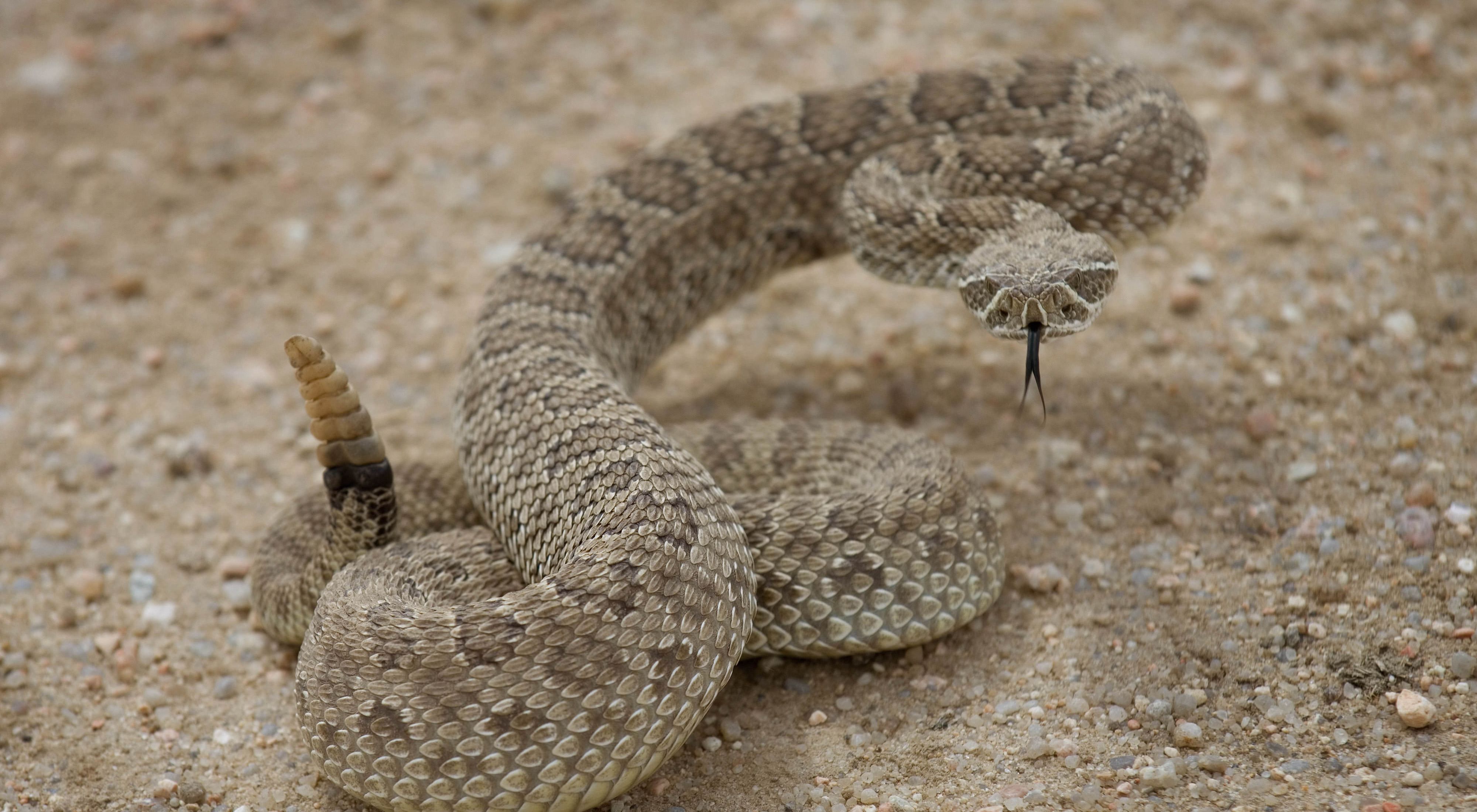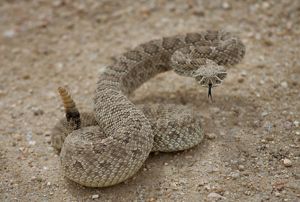Prairie rattlesnakes are fascinating creatures that have captured the attention of many researchers and wildlife enthusiasts. One of the most intriguing aspects of these snakes is their diet. What do prairie rattlesnakes eat? This is a question that has been asked by many, and the answer may surprise you.
Prairie rattlesnakes are carnivorous and primarily feed on small mammals such as mice, rats, and rabbits. They are also known to eat birds, lizards, and other snakes. In fact, prairie rattlesnakes are known to be opportunistic feeders, meaning they will eat whatever prey is available to them. So, if you’re ever hiking in prairie rattlesnake territory, be sure to keep an eye out for these elusive creatures and the prey they may be hunting.
Prairie rattlesnakes are carnivorous and primarily eat small mammals such as rodents and rabbits. They may also consume birds, lizards, and insects. Prairie rattlesnakes are ambush predators and use their venomous bite to subdue their prey.

What Do Prairie Rattlesnakes Eat?
Prairie rattlesnakes are fascinating creatures that are found in the grasslands of North America. These snakes are known for their distinctive rattling sound, which they make by shaking their tail as a warning to potential predators. However, one of the most interesting things about these snakes is their diet. In this article, we will discuss what prairie rattlesnakes eat and how they obtain their food.
What is the Diet of Prairie Rattlesnakes?
Prairie rattlesnakes are carnivorous and primarily feed on small mammals such as mice, rats, and voles. However, they are also known to eat birds, lizards, and other snakes. These snakes are ambush predators, which means that they will wait for their prey to come to them rather than actively hunting it down.
When a prairie rattlesnake senses prey nearby, it will wait silently in a coil until the prey comes within striking distance. Then, the snake will strike with incredible speed, injecting venom into the prey through its fangs. The venom immobilizes the prey, making it easier for the snake to swallow.
How Do Prairie Rattlesnakes Obtain Their Food?
Prairie rattlesnakes have several adaptations that help them obtain their food. One of the most important adaptations is their heat-sensing ability. These snakes have specialized pits on their faces that allow them to detect the body heat of their prey. This ability helps them to locate prey even in complete darkness.
Once a prairie rattlesnake has located its prey, it will strike with lightning-fast speed. The snake’s fangs are hollow, which allows venom to flow through them and into the prey. The venom quickly immobilizes the prey, making it easier for the snake to swallow.
After the snake has injected venom into its prey, it will release it and wait for the venom to take effect. Once the prey is immobilized, the snake will use its powerful muscles to swallow it whole. Prairie rattlesnakes are able to swallow prey that is up to 75% of their own body weight!
Benefits of Prairie Rattlesnakes in their Ecosystem
Although prairie rattlesnakes may seem scary to humans, they play an important role in their ecosystem. By feeding on small mammals, these snakes help to control their populations. This, in turn, helps to maintain a balanced ecosystem.
In addition, prairie rattlesnakes are themselves prey for larger predators such as hawks, eagles, and coyotes. By being a food source for these predators, prairie rattlesnakes help to maintain the food web in their ecosystem.
Prairie Rattlesnakes vs. Other Snakes
Prairie rattlesnakes are often compared to other venomous snakes, such as copperheads and cottonmouths. However, there are several key differences between these snakes.
One of the main differences is their habitat. Prairie rattlesnakes are found primarily in grasslands, while copperheads and cottonmouths are found in forests and wetlands, respectively.
Another difference is their venom. While all three snakes are venomous, the venom of prairie rattlesnakes is generally less potent than that of copperheads and cottonmouths. However, prairie rattlesnakes are still dangerous and should be avoided.
Conclusion
In conclusion, prairie rattlesnakes are fascinating creatures with a unique diet and several adaptations that help them obtain their food. While they may seem scary to humans, they play an important role in their ecosystem by controlling the populations of small mammals and providing food for larger predators. By understanding these snakes and their habits, we can learn to coexist with them in their natural habitat.
Frequently Asked Questions
Learn more about the eating habits of prairie rattlesnakes.
What kind of animals do prairie rattlesnakes eat?
Prairie rattlesnakes are carnivorous and feed on a variety of small mammals, birds, and reptiles. Their diet includes rodents like mice, rats, gophers, and ground squirrels. They also prey on birds, lizards, and other snakes.
Although they are capable of consuming larger prey, they typically stick to smaller animals that are easier to catch and digest. Prairie rattlesnakes will often wait near rodent burrows for their prey to come out, and then strike quickly to catch them.
How often do prairie rattlesnakes eat?
The frequency of meals for prairie rattlesnakes depends on their size and metabolism. Young snakes may eat more frequently than adults, while larger snakes may go longer between meals. Generally, prairie rattlesnakes eat about once a week or every two weeks.
During the winter months, they go into hibernation and do not eat at all. When they emerge in the spring, they are often hungry and will consume several meals to replenish their energy stores.
Do prairie rattlesnakes hunt during the day or at night?
Prairie rattlesnakes are most active during the day, but they will also hunt at night if necessary. Their hunting behavior is often influenced by their prey. For example, if they are targeting nocturnal rodents, they may adjust their hunting schedule accordingly.
During the hottest parts of the day, prairie rattlesnakes may seek shelter from the sun and become less active. They are most likely to hunt in the early morning and late afternoon when temperatures are cooler.
How do prairie rattlesnakes catch their prey?
Prairie rattlesnakes use their venomous fangs to inject venom into their prey, which immobilizes them and makes it easier to swallow. They have heat-sensing pits on their faces that help them locate their prey, even in the dark.
Once they have located their prey, prairie rattlesnakes will strike quickly and use their strong jaws to swallow it whole. Their digestive system is capable of breaking down bones and other tough materials, allowing them to consume their entire prey.
Do prairie rattlesnakes eat anything besides animals?
No, prairie rattlesnakes are strictly carnivorous and do not eat anything besides animals. They do not consume plants or other non-animal matter as part of their diet.
However, they may occasionally ingest small amounts of dust or dirt when consuming their prey, but this is not a significant part of their diet and does not provide any nutritional value.
The Prairie Rattlesnake – Facts & Information
In conclusion, prairie rattlesnakes have a diverse diet that changes depending on their age and location. Younger snakes tend to eat smaller prey such as rodents and insects, while the adults will go for larger mammals like rabbits and birds. Interestingly, prairie rattlesnakes also have the ability to eat other snakes, including their own species. These snakes play a crucial role in the ecosystem by controlling rodent populations, but they can also pose a threat to humans if not approached with caution. Overall, the diet of prairie rattlesnakes is fascinating and highlights the complex relationships between predators and prey in nature.

